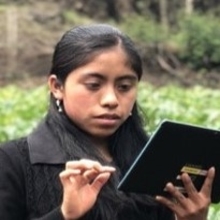

Data-driven Digital Agriculture: Knowledge and Learning Platform
Authors
Tags
- Policy - Agriculture Information Systems (1)
- AgTech (16)
- Climate-Smart Agriculture (3)
- Data-driven Digital Agriculture (14)
- Agriculture Information Systems (4)
- Digital Finance (2)
- Digital Agriculture (10)
- Agriculture (11)
- Agriculture Data Platform (15)
- Agriculture Finance (4)
- Digital Technology & Innovation (2)
- Agriculture Extension (3)
Blog » The World Bank Group Blogs on Data-driven Digital Agriculture and AgTech
The World Bank Group Blogs on Data-driven Digital Agriculture and AgTech
Investing in data and innovation ecosystem to transform Indonesia’s agriculture
by LESLY GOH and KELSEY WU |SEPTEMBER 24, 2021
Digital agriculture has the potential to be a game-changer for agriculture in Indonesia and the country’s startup ecosystem has seen a rapid growth of AgTech or digital solutions for agriculture. Indonesia’s startup ecosystem has seen particularly rapid growth in AgTech. In 2020, AgTech startups raised more than $165 million across 26 deals. Indonesian AgTech actors have helped advance many aspects of traditional agriculture and made important contributions to the needed transformation of the agriculture sector starting from production, supply chain, market access, and transaction to financing solutions. Unfortunately, smallholder farmers may not have the technical knowledge to keep up with agricultural mechanization and trends, resulting in low productivity.
Farm and food policy innovations for the digital age, by Juergen Voegele
Beyond the Pandemic: Harnessing the Digital Revolution to Set Food Systems on a Better Course by Julian Lampietti, Ghada El Abed, and Kateryna Schroeder
Farmer Ex Machina: Is digital agriculture the beginning of the end of agricultural employment? by Laura Ralston And John Downes
How can digital technology help transform Africa’s food system? by Simeon Ehui
Digital technology ensures food supply in rural Bangladesh during COVID-19 by Iftikhar Mostafa
Mirror, mirror on the wall who's the fairest of them all: The case for public blockchains by Marieke De Ruyter De Wildt
Much ado about land rights: How digital technology can disrupt agricultural credit by Elizabeth Ash And Julian Lampietti
Clearly, Shakespeare never farmed. Credit is critical to farming because it sparks agricultural transformation, the process of investment and technological change leading to higher productivity. Traditional development theory tells us that land rights unlock the credit needed for agricultural transformation. But in practice, access to finance is out of reach for many farmers so a smallholder financing gap of USD 150 billion remains. Please click here to read the blog.
Does data mean power for smallholder farmers? by Foteini Zampati
Fail before you scale by Mariella Goebl, Chris Weigl And Marie-Agnès Jouanjean
The future of digital in Uruguay’s agri-food system by Talita Pessoa and Katie Kennedy Freeman
No country for old regulations: Protecting dynamic competition for digital agricultural markets by Julian Lampietti and Jenny Zhang
Digital technology spurring online food retail boom by Ingrid Katrina Korsgard and Artavazd Hakobyan
From meal orders to grocery delivery, the online market for food is growing globally. Nielsen reported that global online grocery purchases increased 15% between 2016 and 2018. China generates the most revenue in food delivery with a total of US$38 billion in 2019. Online food sales are also on the rise in the United States. Twenty-three percent of American households bought food online in 2016, a 20% increase from 2014. Russia is no exception to online food retail trends. Between 2015 and 2017, grocery delivery services saw a US$2billion increase (133%). Please click here to read the blog.
How crowdsourcing can improve food safety by Colin Finan and Patrick Quade
Please click here to read the blog.
Backhaul to the future – Can digital technology make Central Asia’s agriculture competitive? by Julian Lampietti and Kyle Farrell
Whether matching drivers with riders or landlords with lodgers, digital platforms like Uber and AirBnB push the marginal cost of matching supply and demand to an unprecedented low. Large infrastructure projects like China’s One Belt, One Road Initiative - which aims at more closely linking the two ends of Eurasia, as well as Africa and Oceania - could create an opportunity to alter the future of Central Asia’s agriculture, if food supply and demand can be matched more efficiently. Please click here to read the blog.
cost of matching supply and demand to an unprecedented low. Large infrastructure projects like China’s One Belt, One Road Initiative - which aims at more closely linking the two ends of Eurasia, as well as Africa and Oceania - could create an opportunity to alter the future of Central Asia’s agriculture, if food supply and demand can be matched more efficiently. Please click here to read the blog.
The Goods, the Bad, and the Ugly: Data and the food system by Julian Lampietti and Kateryna Schroeder
Planet of the Apps: Making small farms competitive by Julian Lampietti and Randolph Kent
Agriculture 2.0: how the Internet of Things can revolutionize the farming sector by Hyea Won Lee and Vikas Choudhary
Can Digitizing Agribusiness Payments in Africa Build a Ramp for Financial Inclusion of Farmers? by Ajai Nair and Minita Varghese
Precision agriculture for smallholder farmers in Vietnam: How the Internet of Things helps smallholder paddy farmers use water more efficiently by Vikas Choudhary and Karin Fock